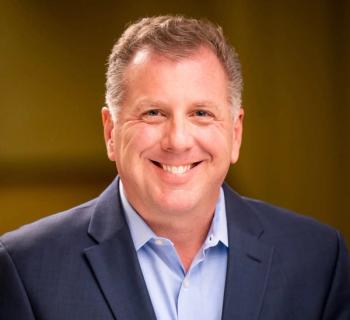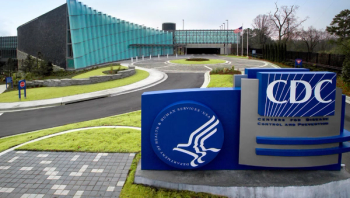
Hospitals and sustainability: Getting started on the journey
Health systems looking to do better for the environment should start small, find some early wins to build success and momentum, and get leadership behind the effort.
Many hospitals and health systems are looking to reduce waste and pollutants, but some hospital sustainability programs are more robust than others, industry leaders say.
For those hospitals that only have modest programs, the work to improve sustainability can seem daunting.
“One of the things I hear from people the most is that it's overwhelming,” Beth Schenk, Providence’s chief environmental stewardship officer, told Chief Healthcare Executive®.
“I can understand that. When you start to look around, it really touches almost everything. So it's hard to wrap one's head around.”
But Schenk and other healthcare leaders say that hospitals looking to make progress shouldn’t be deterred. Health systems can begin with small steps, Schenk says.
Find easy wins
Hospitals should look to make some changes with some easy wins.
She says health systems can make a difference by looking at reducing waste.
“Sometimes the things that are the most visible get the most support and waste is one of those,” Schenk says. “We do all this complicated stuff behind the scenes, but most of the questions we're asked are about waste. And I think it's because people see it, touch it, feel it, produce it. And it's kind of horrifying when you're when you're in the clinical world.”
Hospitals and health systems produce an enormous volume of waste, because many items are used once and discarded. Providence has looked to reduce the use of single-use items and moved to reusable gowns that can be washed dozens of times.
Another easy step can be moving to more energy-efficient LED light bulbs, which also save money in the long run. Schenk notes that building improving efficiency can have an impact, along with addressing transportation. Another option could be using anesthesia that is less harmful to the environment.
Hospital leaders also note that getting a few early wins can build support and enthusiasm for more difficult challenges.
Sustainability certification
The Joint Commission has recently launched a
Hospitals have a golden opportunity to address sustainability efforts, because the Inflation Reduction Act offers billions of dollars in funds and tax credits on projects to improve energy efficiency, Perlin told Chief Healthcare Executive® in a recent interview.
As Perlin says, “With the incentives, can you afford not to do it?”
The Joint Commission’s program is intended to offer a roadmap for hospitals that have new or modest sustainability programs, Perlin says. He notes it also has value for systems with more robust programs.
Get leadership support
Those working on sustainability efforts say that it’s critical to get the support of top leadership on efforts to reduce waste and emissions. And this is likely easier than it was a few years ago, since
Schenk also offers advice for those trying to secure the backing of hospital executives.
“I think it's important, I often say, if you go to leadership, you go with a need, but you also go with solutions,” Schenk says.
“I think it’s important to develop a plan, because what I have found with leaders is they typically don't disagree but don't really know what to do about it, don't know how to start it.” she adds. “So it's important to have some ability within the organization to say, ‘Here's what we should do. And let's try this.’”
‘Alignment of mission’
Schenk also stresses that aligning a sustainability program with the health system’s mission “is absolutely crucial.”
At Providence, Schenk noted that a sustainability program meshes well with the Catholic system’s mission and helping its communities, especially those with low incomes.
“We talk about that a lot because that's kind of who we are and what our culture calls us to do. So that also is important,” Schenk says.
In a 2022
She added that it goes beyond simply doing better for the environment.
“It’s also about your patients,” Schlenker said. “We started with the framework that climate action is inextricably tied to health equity, because the people who are most impacted are the poor, and the vulnerable and people of color, and then it just came naturally out of our desire to advance healthcare overall.”
The business case and beyond
Healthcare leaders who work on sustainability say it’s vital to link programs to reduce emissions and waste to the overall business goals of the organization.
But Schenk says in her opinion, it’s about more than saving money.
“I often will say it's the value case instead of just the business case,” Schenk says. “And other people wouldn't necessarily agree with me on this. But when I talk about it, I often talk about all the ways that it improves our value. And then at the end, I say, ‘It also saves significant dollars.’ Because if we just start with the dollars, I think it distracts people too much.”
Providence is seeing impressive savings with its environmental initiatives. The health system is saving $11 million annually. But Schenk also points out the system’s responsibility to care for its patients and the plant.
“I start with how this is valuable to us in Providence,” she says. “It's valuable because we're called to do this.”
Help for smaller systems
Smaller hospitals and health systems can make progress, even if they don’t have the resources to hire staff solely focused on sustainability, Perlin says.
The Joint Commission’s sustainability certification program was calibrated to be as inexpensive as possible, Perlin says. The program doesn’t require a dedicated individual, he notes.
Since some of the goals are related to energy efficiency, the responsibilities are often tied to the chief financial officer and those in that team.
Again, he notes that smaller programs should take advantage of federal programs offering assistance for projects to improve energy efficiency and sustainability.
For smaller hospitals and systems, Perlin says, “These things may actually be very much of a lifeline.”
To learn more
Check out the Joint Commission’s








































